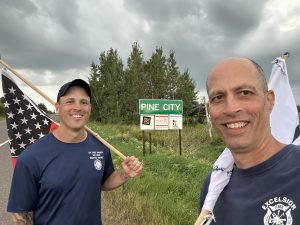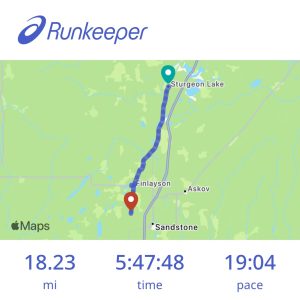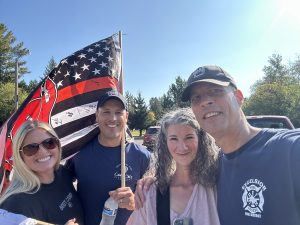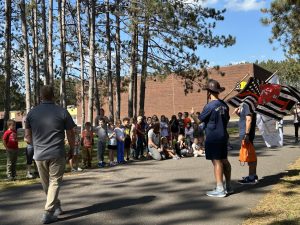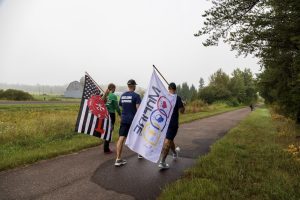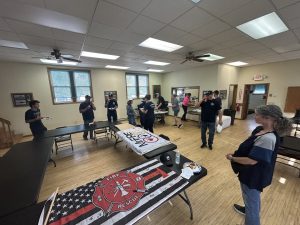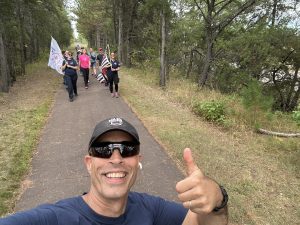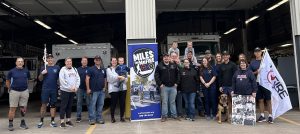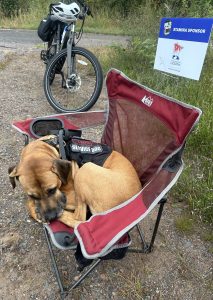Miles for MnFIRE is a walk across Minnesota that raises awareness and much-needed funds for firefighter health. The more than 150-mile journey kicked off on Sept. 13 in Duluth and is making its way through numerous Minnesota communities, including Carlton, Hinckley, Pine City, Rush City, Harris, North Branch, Hugo and Vadnais Heights. The walk ends Sept. 21 at the Minnesota Fallen Firefighter Memorial on the grounds of the State Capitol in St. Paul.
Day 6
Starting location: Pine City, MN
Finish for the day: Harris, MN
Miles completed: 18
The weather report: 78 and overcast
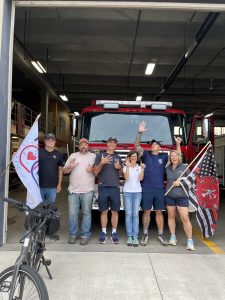
What is the ideal way to celebrate your birthday? Maybe you take the day off of work. Maybe you treat yourself with a visit to your favorite coffee shop, restaurant, or spa. Well, if you are St. Paul firefighter Kyle Bode, you happily spend it walking 18 miles in the name of firefighter health.
“I couldn’t have had a better birthday than doing what I did today,” says Bode. “This walk has been super special, and it will be a very memorable birthday!”
Indeed. As Bode and his counterpart, Doug Foote, made their way through Pine City this morning, local elementary school students lined the sidewalks to cheer them on and sing Bode “Happy Birthday.” The kids gave them high-fives and handshakes to start the day off right.
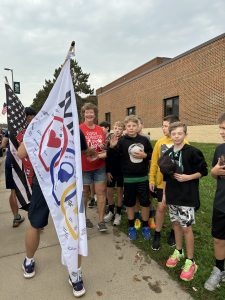 .
. 
Further down the route in Rock Creek, the team passed by a pickleball tournament and the players paused to sing “Happy Birthday!” Foote and Bode were challenged to a game, but as you can imagine, they needed to save their energy for the walk.

In Rush City, Excelsior Fire District Chief Curt Mackey and his wife joined the team, along with Bode’s wife, Kara. The crew took up Rush City Fire Chief Bob Carlson’s recommendation to stop at Rush City Bakery, picking up some marble birthday cake that was absolutely as good as everyone made it out to be.
 .
.
And as Foote and Bode made their way to the final destination of the day in Harris, Minn., a crowd including Bode’s family were there to congratulate the team on another day completed. The makeshift birthday party, including Minnesota DNR firefighters and Harris Fire Department members, was a nice way to end the day.
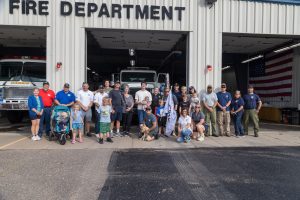
Thus far, they’ve now completed 112 of the 150-mile route. They’re doing as well as you can imagine considering the grueling endeavor.
“We’re holding up ok, but it was another hot day on the highway” says Foote. “I was grateful for MnFIRE Vice President Amber Lage protecting us the whole way. But my favorite part of the day was when Kyle’s family met him to walk into Harris.”

With the stop in Harris, Miles for MnFIRE is officially two-thirds of the way done. Friday, September 19, the team will move on to Wyoming, Minn. From there, on Saturday, September 20, the team walks to White Bear Lake. The final leg will be on Sunday, September 21, from White Bear Lake to the grounds of the State Capitol. We welcome you to join us at any part of this journey, to cheer on the walkers or take part in the walk itself. For more information about our route, stops and expected arrival times, click here.
And, if you’ve been wondering what you should get Bode for his birthday, donate to Miles for MnFIRE. Money raised will help provide resources to Minnesota’s 20,000 firefighters. Our goal is $100,000 – and we can reach that with your help! To contribute, click here.
Stay tuned to our blog and follow us on Facebook for more updates along the way.
Some photos by Ric Rosow

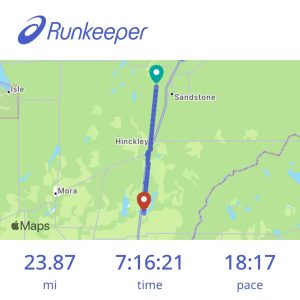

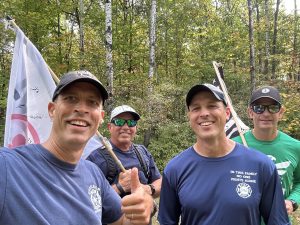

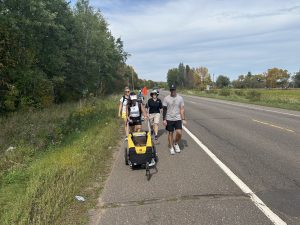 .
.